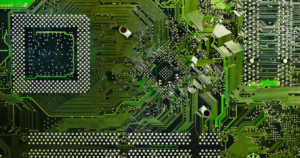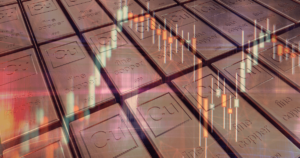Moreover, the rise of new recycling technology and re-mining methods could affect mineral exploration negatively as explorers sit back and wait to see how much recycled stockpiles will add to the global supply of minerals and metals. As the primary mining sector starts feeling the pinch of a green revolution, the recycling sector moves into overdrive to emphasise its pivotal role in the circular economy.
Greenfield exploration and virgin mining might fall victim to a circular economy. With carbon emissions, ESG reporting and environmental impacts now regarded as major risks for new mining companies, the recycling of end-products and re-mining of old tailings dams and mining dumps are looking more and more attractive.
During the recent Joburg Indaba, held in Johannesburg, South Africa on the 6th of October, Bobby Godsell, mining legend and CEO of multinational mining giant Anglo American in the 1990s, raised the issue when asked by one of the delegates whether the new push for a greener future would not be detrimental to exploration. “Exploration and the establishment of new mines are certainly no longer the only way to extract minerals and metals” Godsell said.
Virgin exploration and mining projects have become more expensive, a lot riskier and its environmental footprint is certainly expanding as more new projects come online to satisfy increased global demand.
On the other hand, recycling projects in Europe, North America and Canada, and re-mining operations, especially of PGM’s and gold, have ensured a steady flow of dividends to its shareholders, while, at the same time, have not burnt holes in the pockets of its owners in terms of operational costs. What has become known as Cleantech products, are a lot more environmentally friendly than traditional mining, while being a pivot around which the circular economy operates.

Defining circularity
According to the World Economic Forum the circular economy includes an industrial system that is restorative or regenerative by intention and design. First, at its core, a circular economy aims to design out waste. In circularity, waste does not exist. Products are designed and optimised for a cycle of disassembly and reuse.
So, any method or product requiring inputs from outside the circular economy (like mining raw materials), puts increased strain on the system and adds additional waste.
The costs of finding new deposits and mining them have increased exponentially over the years. At the same time improved mining methods and new technology made it possible for recycling companies to extract the same minerals and metals at a fraction of what big extractive companies have to dish out to keep their projects operational.
The problem with recycling minerals, metals and waste items like tyres until very recently, was not only the amount of carbon the smelters and processing plants spewed out in the recycling process, but also their insatiable demand for a steady supply of energy. Technology by innovative companies has addressed this problem to a large extent.
Sustainable solutions for the circular economy
Progressive and technology focussed companies like TSX.V listed Mineworx (TSX.V: MWX) in North America, for example, has made significant strides in finding more environmentally friendly solutions to recycle spent diesel catalytic converters, which contains large amounts of platinum, rhodium, and palladium (PGMs).
Although for now the company’s focus will be on getting the first commercial plant up and running in North America in the second quarter of 2022, the growth potential beyond the USA is frightening. The Mineworx solution is novel and plays right into the concept of sustainability and circularity. PGMs are notoriously difficult and costly to mine, and extremely complex to process. Moreover, its environmental impacts are not always mitigated effectively. Unless, of course, it is recycled from used diesel converters or reclaimed from historic mining waste dumps, which is the technology being commercialised by Mineworx.
Re-mining historic mine dumps
In South Africa (the top producer of PGMs in the world), the extraction of valuable metals from tailings dumps/residues/ low-grade stockpiles, traditionally regarded as waste, has long been researched by metallurgists. According to a report by Deloitte, several developments in mineral processing technology have combined to make the retreatment of numerous tailings dumps a profitable proposition.
“This is particularly the case for tailings dumps created from the processing of platinum group elements (PGEs) from the UG2 reef in the Bushveld Complex (BC) of South Africa, which are now being retreated to recover chrome.
Similarly, tailings dumps arising from the processing of chrome ore in the Lower Group reefs of the BC are also being retreated to recover PGEs. For example, London listed Pan African Resources (PAR), operated the Phoenix platinum reprocessing plant for a number of years before selling the asset to Sylvania Resources in 2017. Today, PAR runs the Elikhulu gold reprocessing plant and the Barberton Tailings retreatment plant in the Mpumalanga province of South Africa very successfully.
DRDGOLD, another South African company, has been re- mining gold tailings and waste in and around the historic mines of Johannesburg for many years. DRDGOLD has refined and almost perfected their extraction and processing methods to such an extent that they are able to mine some of the lowest grade materials in the world. In the process, they have morphed into a technology company rather than a traditional mining company. DRDGOLD has played an important role in mopping up the environmental legacy left by historic gold mining companies on the reef. By doing so, it has become one of the first companies that can truly claim to have played a role in the circular economy of South Africa.
Tyres and sustainability
There are other great examples (not necessarily in the primary mining space) where Cleantech technology is used to liberate materials through efficient recycling that would normally have remained locked-up in the final product in the past. Canadian headquartered Kal Tire, a tyre service company, retreats and recycles used tyres.
The company recently opened its new off-the-road (OTR) tyre facility in Antofagasta, Chile, where two thermal conversion reactors will be used to dispose of scrap tyres. The OTR solves one of the most pressing environmental issues for large mining companies: getting rid of their used tyres.
Determined to provide a quality scrap tyre solution in Chile, in 2015 Kal Tire began the process of studying, engineering and even building the equipment so it could offer thermal conversion recycling. The process uses heat and friction to induce a reaction that converts tyres into their base elements (fuel oil, steel, and carbon black) so they can be reused.
The green economy has opened-up numerous opportunities for innovative solutions to solve environmental problems. Mineworx and Davis Recycling, its JV partner, recently tested a 100L pilot plant, and has shipped it to Tennessee in the upper south of the USA.
As smelters have become increasingly reluctant to take in spent converters, Mineworx saw an opportunity to extract PGMs in a more environmentally friendly manner to contain excessive carbon emissions. About 80% of the world’s platinum and close to 50% of its palladium, goes into manufacturing diesel catalytic converters.
This is ground-breaking technology, and Mineworx is first to the market. The commercial plant, once in full swing, will produce approximately ten tonnes of spent converters per day and revenues are expected to exceed USD100 million. These are phenomenal numbers from a business perspective, considering that the recycling of converters is currently (with old technology) worth more than USD25-billion.
According to Greg Pendura, CEO of Mineworx, revenues will start showing on the balance sheet in the fourth quarter of this year once the pilot plant in Tennessee gets into the swing of things.
The move towards decarbonisation and a renewed focus on ESG’s have played right into the hands of established recycling companies like Mineworx. Over the last 10 years or so, PGMs have been consistently short on supply. The world’s mining operations alone cannot meet or sustain global demand for PGMs. This has created space for recycling to help meet the shortfall. Moreover, sourcing recycled metals is generally cheaper than mining and generates up to 90% less CO2.
In a new normal, where climate change, biodiversity, circularity, rehabilitation and ESGs have become the buzz words, research, and development in the circular economy, especially in the recycling sector, will become paramount.
Although mining new deposits will always be the bedrock on which the mining industry is built, the rise of recycling, re-mining and innovative CleanTech companies like Mineworx, should not be underestimated. In the not-too-distant future these types of extraction companies might affect direct exploration spend, as an oversupply could sterilise growing stockpiles.





